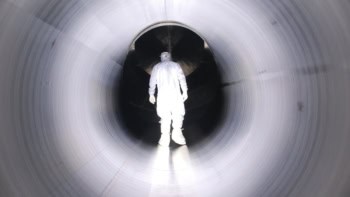
A huge discrepancy between the observed hyperfine splitting in highly-ionized bismuth-209 atoms and the expected value could be a calculation error rather than evidence for new physics. That is the conclusion of Leonid Skripnikov at St Petersburg State University in Russia and colleagues, who have shown that the magnetic moment of the bismuth-209 nucleus – which is used to calculate the hyperfine splitting — is much smaller than the currently accepted value.
Hyperfine splitting is a small shift in electron energy levels that arises because of the interaction between the dipole magnetic moment of the atomic nucleus and the orbital motion of the electrons. Very precise spectroscopic measurements of hyperfine splitting offer a way of testing quantum electrodynamics (QED). Finding discrepancies between QED and experimental observations could point towards physics beyond the Standard Model of particle physics.
Sole electron
In 2017, Wilfried Nörtershäuser of the Technical University of Darmstadt and colleagues injected bismuth-209 atoms into the Experimental Storage Ring (ESR) at GSI Helmholtz Centre for Heavy Ion Research in Darmstadt. The atoms were stripped of all but one of their electrons. This remaining electron is tightly bound in hydrogen-like orbits that have very large overlaps with the bismuth nucleus. The bismuth-209 nucleus has a huge magnetic moment – and this combined with the close proximity of the electron makes the system ideal for testing QED.
There is an important snag, however, because quantum fluctuations make it extremely difficult to calculate the distribution of magnetization in the nucleus – something called the Bohr-Weisskopf effect. To get around this problem, the team also created lithium-like ions by stripping bismuth-209 atoms of all but three of their electrons. By comparing measurements of the hydrogen-like and lithium-like ions, the team could cancel-out the Bohr-Weisskopf effect and measure the difference between the hyperfine splitting of the hydrogen-like and lithium-like ions.
Whopping deviation
Much to their surprise, the team found that this difference had a whopping 7σ deviation from that predicted by theory, which could be indicative of new physics. But now, new measurements and calculations done by Skripnikov and colleagues (including Nörtershäuser) suggest a more mundane explanation.
Calculating the hyperfine splitting from the experimental data requires an accurate value for the nuclear magnetic moment of bismuth-209. Nörtershäuser along with Darmstadt’s Michael Vogel and colleagues used nuclear magnetic resonance spectroscopy to measure the magnetic moment of the nucleus. This was done by placing an aqueous solution of bismuth nitrate in a powerful superconducting magnet and measuring its radio-frequency spectrum.
An important challenge in making this measurement is accounting for the effect of the bismuth nitrate solution on the local magnetic field that is felt by the bismuth nuclei. This was worked-out by Skripnikov and colleagues, who did sophisticated quantum-mechanical calculations that revealed that the effect on the local field was much greater than expected.
Good agreement
When the new value of the magnetic moment was used to calculate the hyperfine splitting, the result was in good agreement with the original experiment.

Antimatter hyperfine splitting is measured at CERN
“It would be too early to state that this represents the complete solution to the hyperfine puzzle,” says Nörtershäuser, adding “nevertheless, it is for sure a significant part of the solution”. “Further experiments are still needed to achieve complete clarity about the interplay between the atomic nucleus and the shell and, therefore, to verify the theoretical predictions of the nature of quantum mechanics in very strong fields”.



